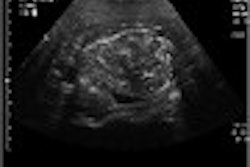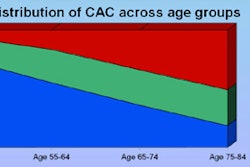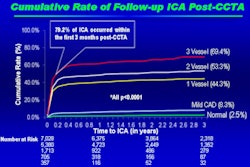
CHICAGO - The use of dual-energy CT with spectral imaging can differentiate bland thrombi in the portal vein from more dangerous tumor thrombi in patients with hepatocellular carcinoma, researchers reported at the RSNA 2011 meeting on Sunday.
Dr. Lijun Qian, PhD, from the department of radiology at Jiao Tong University School of Medicine in Shanghai, said that by comparing the thrombus iodine density, thrombus-aorta iodine density ratio, and thrombus-portal vein iodine density ratio, the thrombus identified in the vein could be classified as neoplastic or a benign clot formation.
 Dr. Lijun Qian, PhD.
Dr. Lijun Qian, PhD.The retrospective study included 43 patients (31 men, 12 women; average age, 52.8 years) who underwent multiphase contrast-enhanced CT with dual-energy spectral scanning in the portal venous phase. The patients were divided into two groups -- bland (n = 18) and neoplastic (n = 25) -- according to a pre-established reference standard based on pathologic, clinical, and imaging findings, the researchers noted.
The average neoplastic lesion in the 25 patients showed a thrombus iodine density of 2.69 mg/mL, compared with a density of 0.99 mg/mL in the 18 patients with bland thrombi (p < 0.001), Qian said.
The thrombus-aorta iodine density ratio was 0.37 among those patients with neoplastic lesions, compared with 0.13 among the patients exhibiting bland thrombi (p < 0.001).
The thrombus-portal vein density ratio was 0.40 among those patients with neoplastic lesions, compared with 0.13 among the patients with bland thrombi (p < 0.001).
"We found that contrast-enhanced, dual-energy CT imaging with quantification of iodine density of thrombus in the portal venous phase appears very promising as a predictive method of distinguishing neoplastic from bland macroscopic portal vein thrombi," Qian said.
The neoplastic and bland thrombi could be differentiated with an overall sensitivity of 100% and a specificity of 88.9% by applying the thrombus iodine density threshold of 1.12 mg/mL in the portal venous phase, he said.
The determination of whether the lesion is bland or a tumor thrombus is important regarding prognosis and therapy, said Dr. Jeffrey Weinreb, professor of radiology at Yale University and co-moderator of the oral session at which Qian presented the pilot study.
"You want to know whether this is bland or tumor thrombus because typically tumor thrombus is indicative of a disease that is much further along," said Weinreb. "A bland thrombus is just a clot, and some doctors may or may not treat it. A tumor thrombus is a bad thing in general and its determination will affect what the treatment options are." Weinreb did not participate in the study.
A major limitation of the study was its retrospective nature, Qian noted. He also explained that in 27 of the 43 cases reviewed, the determination of the nature of the thrombus was based on clinical and imaging analyses, not on pathological examination. Results may also have been skewed because CT does not visualize minute portal vein thrombi, Qian added.



















